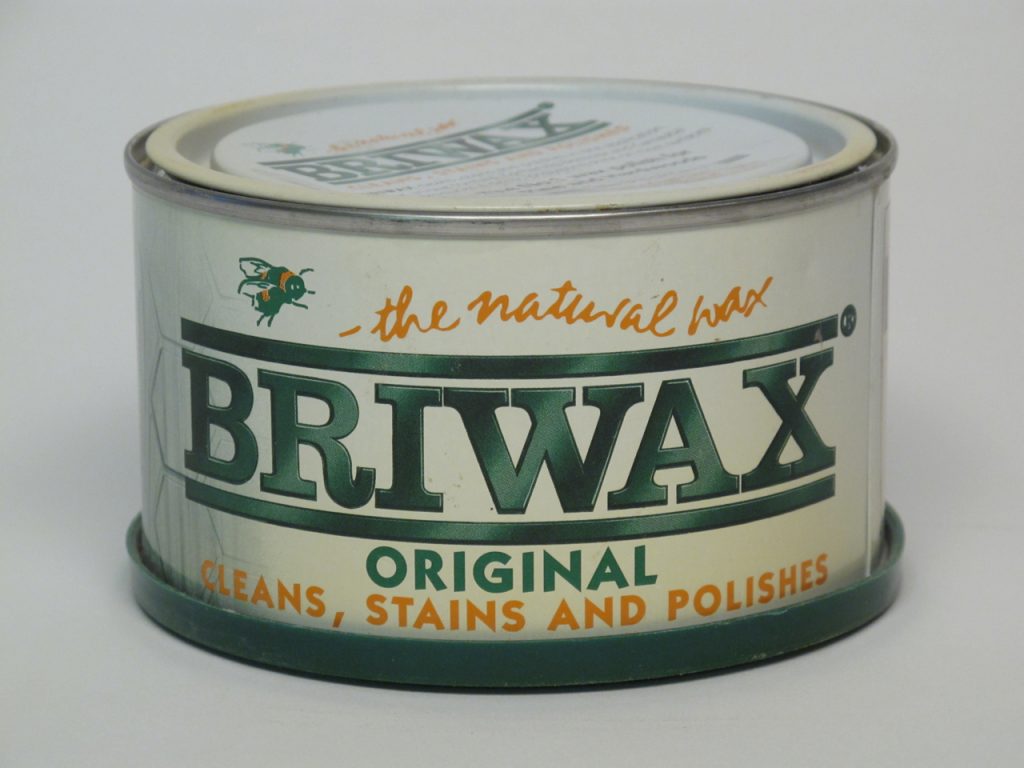We may receive a commission when you use our affiliate links. However, this does not impact our recommendations.

A can of Briwax paste wax with toluene.
A reader thought he remembered my cautioning against applying paste wax over water-based finish or latex paint. His memory was that I had said that paste wax could damage these coatings.
This is not true, of course. There’s no problem applying most paste waxes over water-based finish or latex paint. But the source of the confusion could still be me because I have said that one brand of paste wax, Briwax, could cause damage.
Traditional Briwax contains toluene (toluol), which is a strong, fast-evaporating solvent. Toluene will damage water-based finishes, latex paints and also varnishes and lacquers if they aren’t fully cured.
My experience with Briwax goes back before it became popular, maybe even before it became available in the U.S. An antique dealer across the street from my shop brought me back a can from a buying trip to England. She loved this paste wax because it dries so fast that it can be buffed out almost immediately – in contrast to other paste waxes, which require much more time for the solvent to evaporate. The fast evaporation, of course, is the consequence of the toluene.
More recently, Briwax has had to add a toluene-free paste wax to its line of products because of environmental concerns with the toluene. But this new version still contains xylene (xylol) in addition to naphtha, both of which evaporate slower than toluene. Importantly, these solvents, especially xylene, are still strong enough to cause damage.
So be cautioned if you like using this wax for its easy workability.
— Bob Flexner
Here are some supplies and tools we find essential in our everyday work around the shop. We may receive a commission from sales referred by our links; however, we have carefully selected these products for their usefulness and quality.










The law of unintended consequences sometimes get ugly. After California restricted VOC in finishes (because of smog concerns?), the manufacturers came with some very very nasty fluorinated aromatic hydrocarbon solvent for oil-based poly, which I suspect was much much worse in regard to smog (and possibly very carcinogenic) than old plain Stoddard. Luckily, that solvent seems not used anymore.
Hi, Bob,
Thank you for pointing out how solvents can vary between products, or even different versions of the same product. I think it’s ironic that environmental concerns are having a greater influence on solvent selection than the health of the person using the products. Reducing smog or other environmental improvements is going to have a positive effect on people’s lives, but for the person applying the wax I think it’s a wash. Xylene and toluene are about equally nasty and the guy holding the can is going to get the biggest dose of either.
Some solvents are easier to work with than others, no question. With so many other alternatives, most with less nasty ingredients, I am glad I have options. This one isn’t for me. I can just wait an extra minute or two before I buff.
-Lf
I used this same wax last week, an old can passed down from a relative. I think I have a lacquer finish on a ‘crate and barrel’ table that’s been damaged badly with casual use. Applying the wax quickly dissolved some embedded grime, but also (I think!) softened the finish? It streaked badly as I tried to buff it out… so I grabbed my stuff, hid it in the garage and hope nobody notices. I have used the same wax without issue over shellac and wiping varnish finishes.